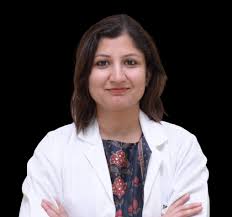Overview
Breast cancer is one of the most common types of cancer in India according to a study done by the American Cancer Society, affecting more than 216,000 women, and accounting for 28.2% of all cancers that affect women.
The incidence of breast cancer is rising steadily in India and approximately 162,500 new cases are diagnosed each year with a 5-year survival rate of 60%, based on the stage of diagnosis. The prevalence of breast cancer in India is among women of 40 to 50 years, which is 10 years younger than in Western countries.
With the rising incidence and mortality rates(ratio of deaths) of breast cancer, spreading awareness about the disease and its screening is critical for survival. Here, we'll cover the various aspects of breast cancer to help people understand the disease, its causes, risk factors, symptoms, types, stages, warning signs, and treatment options.
What is breast cancer?
Breast cancer is a type of cancer(a disease where the body's cells multiply abnormally) that originates from breast cells, especially ducts and lobules. It forms when the breast cells mutate and start to grow uncontrollably, resulting in a tumor. These cells can start invading surrounding healthy tissues and metastasize (spread) to other body parts. One important thing to keep in mind is that even though breast cancer commonly occurs in women, it can also develop in men.
In normal conditions, the breast cells grow in an orderly and controlled manner and the new cells form to replace the old and damaged cells only. However, due to a variety of factors, the cell growth can get out of control and form a mass, called a tumor. When this tumor is malignant(cancerous), it poses a great risk to the individual's life and can also lead to death, if not treated on time.
Types of Breast Cancer
Generally, breast cancer is categorized based on its origin and characteristics. The main types are listed below:
Ductal Carcinoma in Situ (DCIS)
It is a non-invasive type of breast cancer where the cancerous growth is confined within the milk ducts. DCIS is considered the earliest form of breast cancer as it doesn’t exhibit clear symptoms.
Ductal Carcinoma In Situ is highly treatable and has a good prognosis(chance of recovery) if detected and treated early.
Invasive Ductal Carcinoma (IDC)
This type of breast cancer begins in the milk ducts and starts to spread to surrounding healthy tissues. Around 80% of breast cancer cases are invasive ductal carcinoma and present as a lump. As the cancer grows, the breast shape will also start to change and the skin around the breast will start dimpling.
Invasive Lobular Carcinoma (ILC)
This type of breast cancer forms in the milk-producing glands, i.e., lobules, and invades the surrounding tissues. The invasive lobular carcinoma accounts for 10% to 15% of invasive breast cancers. An ILC is less likely to form a distinct lump but may cause thickening or swelling in some parts of the breast. This type of cancer is comparatively harder to detect through imaging tests as the tissues are thick and swollen and is often diagnosed at later stages.
Inflammatory Breast Cancer (IBC)
It is a rare type of breast cancer that affects the lymph vessels in the breasts and is very aggressive. As this type of cancer grows, the breasts become red, swollen, and warm, and exhibit an orange-peel texture. Due to the aggressive nature of inflammatory breast cancer, its symptoms appear suddenly and progress rapidly, necessitating timely intervention.
Triple-Negative Breast Cancer (TNBC)
This type of breast cancer is more common among young women, especially women of African American ethnicity. The three common receptors that are known to cause cancer cell growth, i.e., estrogen, progesterone, and HER2, are missing in this type of cancer, which makes it harder to treat TNBC with hormone or targeted therapies. It tends to grow rapidly and spread to the surrounding tissues and organs more quickly than other types.
HER2-Positive Breast Cancer
In this type of cancer, the HER2 protein levels rise significantly, which promotes the cancer cell growth in breasts. It accounts for 20% of breast cancer cases and is often found in younger women.
Hormone Receptor-Positive Breast Cancer
In this type of cancer, the cancer cells have receptors for estrogen (ER-positive) and/or progesterone (PR-positive). It is most common in postmenopausal women and the growth rate is very low.
Paget’s Disease of the Breast
It is a rare form of breast cancer that originates in the milk ducts and spreads to the nipple and areola, making the skin red, scaly, and itchy. This type is associated with underlying ductal carcinoma in situ or invasive breast cancer.
Understanding the various types of breast cancer is the first step in determining the most effective treatment options. As each type of breast cancer has different and unique characteristics, the treatment is tailored to achieve optimal outcomes.
Stages of Breast Cancer
The stages of breast cancer are used to describe how advanced the cancer is. The staging is done based on the size of the tumor, the involvement of lymph nodes, and metastasis and it plays a major role in determining the treatment options and prognosis.
The breast cancer stages are explained below:
Stage 0: Carcinoma In Situ
At this stage, the cancer is confined to its place of origin and appears as a lining in the milk ducts or lobules, without any involvement of the lymph nodes.
Stage I: Early Stage
In the early growth stage of breast cancer, the tumor is smaller than 2 cm and may have small clusters in the lymph nodes.
Stage II: Localized Spread/Growth
At this stage, the cancerous growth starts to invade the surrounding healthy tissues. It may spread to the axillary lymph nodes, mammary nodes, or both.
Stage III: Regional Spread
At stage 3, the cancer starts to spread and grow significantly and the symptoms become more apparent. The size of the tumor is usually larger than 5 cm and 4-9 or even more axillary lymph nodes may also be involved. In some cases, the cancer may invade the chest wall or skin, resulting in swelling or ulcers.
Stage IV: Metastatic Breast Cancer
This is the most severe stage as breast cancer has spread to the surrounding organs as well, including but not limited to bones, liver, lungs, brain, etc. The late-stage breast cancer has minimal chances of survival and the treatment is focused on prolonging and improving the quality of life of the patient. Supportive and palliative care is also recommended.
Who Gets Breast Cancer?
Breast cancer can affect both men and women. Though it is comparatively rare in men, there is a 1% chance of men developing breast cancer as well. The most crucial factor that leads to the development of breast cancer is the hormonal imbalance in the body. As the estrogen level in the body increases, the cell growth in the breast gets out of control and results in breast cancer.
Other than hormonal levels, an individual’s age, family history, genetic mutations, late pregnancy, lack of breastfeeding, being overweight, lack of physical activity, and lifestyle factors also contribute to and increase the chances of an individual getting breast cancer.
One thing to note here is that regardless of the breast tissue growth, there is always a slight chance of the development of breast cancer. That’s why there is a misconception that men cannot get breast cancer as the breast tissues in their anatomy are dormant and their growth is not triggered.
In normal conditions, the breast cells grow in an orderly and controlled manner and the new cells form to replace the old and damaged cells only. However, due to a variety of factors, the cell growth can get out of control and form a mass, called a tumor. When this tumor is malignant(cancerous), it poses a great risk to the individual's life and can also lead to death, if not treated on time.
Get Treatment from the Best in Industry
Our Specialists

Dr. Vikram Singhal
Speciality: Medical & Hemat Oncologist
Experience: 12+ Years
Qualification: MBBS, MD (Radiation Oncology), DNB (Radiation Oncology), DrNB (Medical Oncology), MRCP (UK) SCE (Medical Oncology)

Dr. Sukriti Gupta
Speciality: Hemato-Oncologist
Experience: 11+ Years
Qualification: PDCC Hemato-Oncology Sanjay Gandhi Post Graduate Institute of Medical Sciences, Lucknow, MD (Pediatrics) Lady Hardinge Medical College and associated Kalawati Saran Children’s Hospital, Delhi, MBBS Maulana Azad Medical College & associated Lok Nayak Hospital, Delhi


Dr. Raajit Chanana
Speciality: Medical Oncology (Hemato-Oncology)
Experience: 15+ Years
Qualification: MBBS - Maulana Azad Medical College (MAMC), MD Internal Medicine -Lady Hardinge Medical College, DM Oncology - Tata Memorial Hospital, Mumbai (2017)